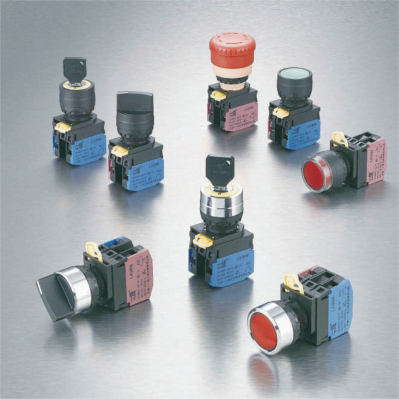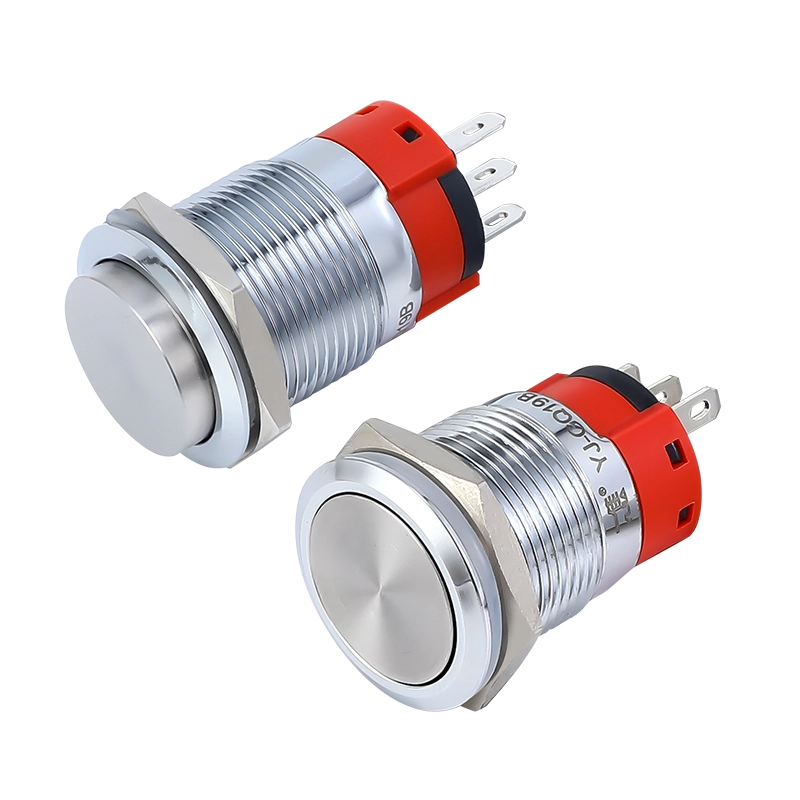Analysis of the operating mechanism of relay switches
Relay switch definition
A relay switch is an electrical control device typically used to remotely control larger currents in an electrical circuit. It allows a smaller current to control the switching of one or more larger current circuits. A relay switch is mainly composed of an electromagnet and a set of movable contacts. When an electromagnet is energized, it creates a magnetic force that attracts the contacts to close, thereby connecting or breaking the circuit.
The working principle of relays makes them very important in electrical control systems, especially where low voltage or small current needs to be used to safely control high voltage or high current equipment. This kind of switch can effectively isolate the control end and the controlled end, increasing the safety and flexibility of the system.
Components of relay switches
Relay switches are made up of several basic components that work together to control and manage the circuit. The following are the main components of a relay switch:
- Electromagnetic coil: It is the core part of the relay. When the appropriate current passes through it, it generates magnetic force. This magnetic force is used to drive other mechanical components, such as an actuator or contact, thereby changing the state of the contact.
- Contact: The contact is the part of the relay that opens or closes the circuit. Contacts are usually divided into normally open contacts and normally closed contacts. The normally open contact opens when there is no electromagnetic force, and closes when the electromagnetic coil is energized; the normally closed contact closes when there is no electromagnetic force, and opens when the electromagnetic coil is energized.
- Actuator arm (actuator): The actuation arm is the mechanical component that connects the solenoid and the contacts. When the solenoid is activated, the actuator arm moves, thereby pushing the contacts to close or open.
- Spring: The spring is used to return the contacts to their original state (normally open or normally closed) after the solenoid coil is deenergized.
- Housing: The relay’s housing not only provides physical protection from dust and other environmental factors from affecting the internal components, but also helps with electrical insulation to prevent accidental electric shock.
- Terminals: Terminals are the interface through which the relay is connected to the circuit. Relays usually have multiple terminals that connect the solenoid coil and contact lines.
Advantages and Disadvantages
Relay switches play an important role in many electrical systems, but like any technology, they have their advantages and disadvantages:
Advantage
- Isolation function: Relays can provide excellent electrical isolation, allowing low-voltage circuits to safely control high-voltage equipment and reduce the risk of electrical faults.
- Compatibility: Relays can be used in both AC and DC circuits and are available in a wide range of voltage and current specifications, allowing them to find applications in different electrical systems.
- Flexibility: Because relays come in many types and configurations, they can be customized for use in a variety of control and power applications.
- Cost-Effectiveness: Compared to many other types of switches, relays are generally less expensive and easy to maintain and replace.
- Durability: Properly configured and maintained relays can withstand high current loads and have a long service life.
Shortcoming
- Physical size: Compared to solid-state switches, relays are larger and may not be suitable for applications where space is limited.
- Switching speed: Relays have slower response times than solid-state switches, which can be a disadvantage in applications requiring high-speed switching.
- Contact Worn: A relay’s contacts can become worn over time, which can affect its performance and reliability.
- Noise: The relay’s contacts may produce an audible clicking sound when switching, which may be undesirable in some silent applications.
- Power consumption: Continuous activation of the solenoid can result in relatively high energy consumption, especially in low-power applications.
The working process of relay switch
The workflow of a relay switch involves several key steps that together ensure that the relay can effectively control the flow of electricity in a circuit. This process is detailed below:
1. Activate the solenoid coil
The operation of a relay begins with the control circuit sending current to the electromagnetic coil. This current creates a magnetic field as it flows through the coil.
2. Magnetic effect
The generated magnetic field attracts the iron core, driving an action arm or actuator connected to the electromagnetic coil. This action is usually accomplished through physical movement, which depends on the design of the relay.
3. Contact movement
The movement of the actuating arm causes the contacts of the relay to change. For normally open contacts (NO), the originally open contacts will close, allowing current to flow; for normally closed contacts (NC), the originally closed contacts will open, interrupting the flow of current.
4. Maintain status
As long as the control circuit continues to provide power to the solenoid, the contacts will remain in their changed state (closed or open). This allows the relay to control a larger current circuit while using only a smaller current for control.
5. Reset
Once the control circuit stops supplying power to the solenoid, the relay’s magnetism disappears. Typically, a built-in spring or gravity returns the action arm and contacts to their original positions, restoring them to their original open or closed state.
6. Loop operation
The relay can respond to the control signal by repeating the above process to achieve repeated switching control of the circuit.
In this way, relays can play a key role in circuits, especially in scenarios where low voltages and small currents need to be used to control high voltages and large currents. This workflow makes relays an important component in automation and remote control applications.
Application scenarios
Relay switches play a key role in many different application scenarios and can be seen in a wide range of applications, from household appliances to high-end industrial equipment. The following are some main application scenarios:
1. Household appliances
Relays are used in household appliances such as washing machines, refrigerators, and air conditioners to control the start and stop of motors and the switching of heating elements to achieve automated operations and energy-saving effects.
2. Industrial automation
In automated production lines, relays are used to control the movement of various machinery, such as motor start and stop, as well as the automatic control of other equipment, such as pressure and temperature control systems.
3. Automotive electronics
Relays are used in cars to control headlights, fog lights, air conditioning systems, etc. They allow low-power switches or sensors to control high-power loads, enhancing vehicle functionality and comfort.
4. Communication equipment
In communications systems, relays are used to route signals, such as in telephone switching systems or network equipment.
5. Power system
Relays are widely used in power system protection and control, such as circuit breaker control, overload protection and transformer control. They help ensure the stability and security of the electrical grid.
6. Security and alarm systems
In security systems, such as intruder alarms and fire alarm systems, relays are used to activate alarms and turn the security system on or off.
7. Medical equipment
In medical equipment, relays are used to control various functions of the equipment, such as switching surgical lights, power control of medical monitoring equipment, etc.
FAQ
1. What is the service life of a relay switch?
The life of a relay depends on its design, usage conditions and frequency. Generally speaking, relays can withstand thousands of switching operations. Under standard usage conditions, high-quality relays can usually achieve 100,000 to 1 million operations.
2. Is the noise generated by the relay switch normal?
Yes, there will be a clicking sound when the relay’s contacts open and close, this is normal. If the noise is excessive or accompanied by other abnormal sounds, the contacts may be worn or damaged and need to be inspected or replaced.
3. How to choose the appropriate relay switch?
Answer: When selecting a relay, you should consider the voltage and current to be controlled, as well as the operating environment (such as temperature and humidity). The size and mounting of the relay should also be considered to ensure compatibility with existing systems.
4: At what voltages can the relay switch work?
Relays can work at different voltage levels. Common ones include DC voltages such as 5V, 12V, and 24V, and AC voltages such as 110V and 220V. Make sure the relay you choose matches the voltage of your application.
5: What are the main faults of relay switches?
Common relay failures include worn contacts, burned coils, and mechanical failure. Worn contacts can lead to poor contact, coil burnout can be caused by overloading, and mechanical failure can be due to external influences or damage to internal components.
6: How to maintain relay switches?
Regularly check the status of relay contacts and coils to remove dust and corrosion and ensure connections are tight. For relays that are used frequently, more frequent inspection and maintenance can extend their service life.


